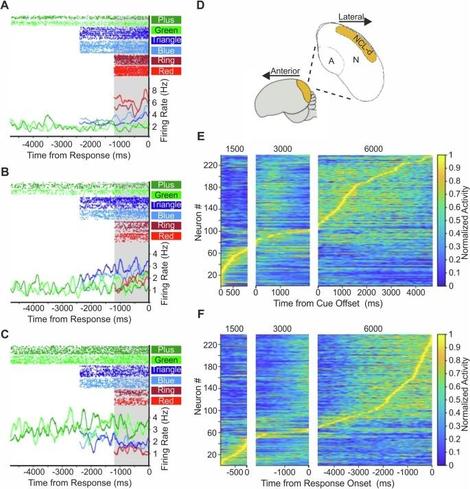🚨 Breaking News 🚨: The internet's finest minds have gathered to conclude that time perception is... logarithmic? 🧐 Meanwhile, this groundbreaking discovery is protected by an impenetrable fortress called #ModSecurity, which grants you the privilege of knowing you're not allowed to know. 🙃💡
http://www.kafalas.com/Logtime.html #BreakingNews #TimePerception #Logarithmic #Innovation #HackerNews #ngated
#Timeperception
The Logarithmic Time Perception Hypothesis
http://www.kafalas.com/Logtime.html
#HackerNews #LogarithmicTime #Perception #Hypothesis #TimePerception #CognitiveScience #Research #Innovation
Polychronic and monochronic modes of time perception and time management:
www.cbc.ca/radio/thecur...
#neurodiversity #timemanagement #earlybird #nightowl #neurodivergence #adhd #presentmoment #timeline #time #audhd #timeblindness #culture #diversityandinclusion #neurodivergent #Timeperception
Always running late? Blame it ...
Polychronic and monochronic modes of time perception and time management:
#neurodiversity #timemanagement #earlybird #nightowl #neurodivergence #adhd #presentmoment #timeline #punctuality #TimeBlind #late #ontime #time #audhd #timeblindness #deadlines #culture #diversityandinclusion #dei #neurodiversidad #perception #neurodivergent #Timeperception
🧠 New study by Johnston, Kirschhock & Nieder (Nature Comm., 2025): Carrion #crows 🐦⬛ estimate time intervals 🕠 using abstract magnitude coding in the nidopallium caudolaterale (avian “prefrontal” #cortex). NCL neurons tuned to 1.5 s, 3 s & 6 s wait times predicted intended duration, independent of cues. This demonstrates that sophisticated timing is possible – even without a #neocortex.
La percepción del paso del tiempo describe la experiencia subjetiva del tiempo y como un individuo interpreta la duración de un evento.
Puede variar con el estado emocional, el nivel de atención, la capacidad de memoria y con ciertas enfermedades.
Las cortezas frontal, parietal, el cerebelo, el hipocampo y los núcleos de la base están involucrados. Existen “neuronas del tiempo”.
#TimePerception #TimeCells #Memory #Time #Neurology #NeuroAnatomy #Neurophysiology
"You have to understand, I was a geologist by training. Without knowing it, I […] created the field of human chronobiology."
My Timing Research Forum talk from February 2025 on the Embodiment of Time now available on Youtube:
#TimePerception
For those fascinated by the physics of time, quantum consciousness, and the possibilities of time travel, Temporal Mechanics is a mind-expanding read (or listen).
https://www.ecstadelic.net/e_news/temporal-mechanics-d-theory-as-a-critical-upgrade-to-our-understanding-of-the-nature-of-time-by-alex-m-vikoulov-now-available-as-an-audible-audiobook
#TemporalMechanics #QuantumPhysics #DigitalPhysics #CognitiveScience #QuantumAI #QuantumComputing #consciousness #QMInterpretation #ArrowofTime #TimeTravel #CyberneticTheory #Timescales #TimePerception #QuantumMultiverse #AlternateTimelines #OmegaPoint #ComputationalNeuroscience #entropy #complexity
Time expansion experiences: why time slows down in altered states of consciousness
#Psychology #TimePerception #AlteredStates #Consciousness #TimeExpansion #Mindfulness #Meditation #Psychedelics #Time #FlowState #Neuroscience
https://the-14.com/time-expansion-experiences-why-time-slows-down-in-altered-states-of-consciousness/
Christmas comes faster every year? Psychology study sheds light on holiday time distortions https://www.psypost.org/christmas-comes-faster-every-year-psychology-study-sheds-light-on-holiday-time-distortions/?utm_source=dlvr.it&utm_medium=mastodon #Christmas #TimePerception #Psychology #HolidaySeason #CognitiveScience
Time perception in humans seems to be locked to language processing
(12/12)
This results in empirical predictions. I will now go check the research on the threshold of conscious time perception in humans to see what is known to this day, and to see whether someone has made the link with language processing before.
#Language #Theory #Science #psycholinguistics #linguistics #CognitiveScience #Cognition #mind #time #TimePerception #perception #speech #processing
Time perception in humans seems to be locked to language processing
(10/12)
If you are talking to someone, there is no perceived time between the perception of the act that originates the stimulus (visual presentation of a sentence, or articulatory activity of a speaker) and the comprehension of the content conveyed by the physical stimulus.
#Language #Theory #Science #psycholinguistics #linguistics #CognitiveScience #Cognition #mind #time #TimePerception #perception #speech #processing
Time perception in humans seems to be locked to language processing
(9/12)
However, we do not perceive the passing of time at all when we do processing language. When we process language, we experience it automatically.
#Language #Theory #Science #psycholinguistics #linguistics #CognitiveScience #Cognition #mind #time #TimePerception #perception #speech #processing
Time perception in humans seems to be locked to language processing
(8/12)
It thus follows that sound and light perception take time, and that whatever time this takes, it is less than the time it takes to extract meaning out of sound and light.
#Language #Theory #Science #psycholinguistics #linguistics #CognitiveScience #Cognition #mind #time #TimePerception #perception #speech #processing
Time perception in humans seems to be locked to language processing
(7/12)
The above is true for meaningless sounds. In the case of meaningful stimuli, it is also obvious that content extraction from the stimulus must necessarily take more time than the time needed to process meaningless sensory stimulation.
#Language #Theory #Science #psycholinguistics #linguistics #CognitiveScience #Cognition #mind #time #TimePerception #perception #speech #processing
Time perception in humans seems to be locked to language processing
(6/12)
We know that it actually takes time from sound and light to travel from its source to our sense organs, and that it takes more time for us to transform these vibrations into electrical activity that results in sound/visual perception.
#Language #Theory #Science #psycholinguistics #linguistics #CognitiveScience #Cognition #mind #time #TimePerception #perception #speech #processing
Time perception in humans seems to be locked to language processing
(5/12)
However, notice that when it comes to meaningful linguistic stimulation, be it by means of acoustic or visual means, we do not experience additional time in the extraction of content from the input. Let me break this down:
#Language #Theory #Science #psycholinguistics #linguistics #CognitiveScience #Cognition #mind #time #TimePerception #perception #speech #processing
Time perception in humans seems to be locked to language processing
(4/12)
Senses seem to be immediate though. If something makes a sound, I do not perceive the passing of time between the source of the sound and its perception. Same with vision, smell, touch and taste.
#Language #Theory #Science #psycholinguistics #linguistics #CognitiveScience #Cognition #mind #time #TimePerception #perception #speech #processing
Time perception in humans seems to be locked to language processing
(3/12)
If I think, I also think across time. If I eat, or if I meditate… these are all activities that allow the perception of the passing of time.
#Language #Theory #Science #psycholinguistics #linguistics #CognitiveScience #Cognition #mind #time #TimePerception #perception #speech #processing
